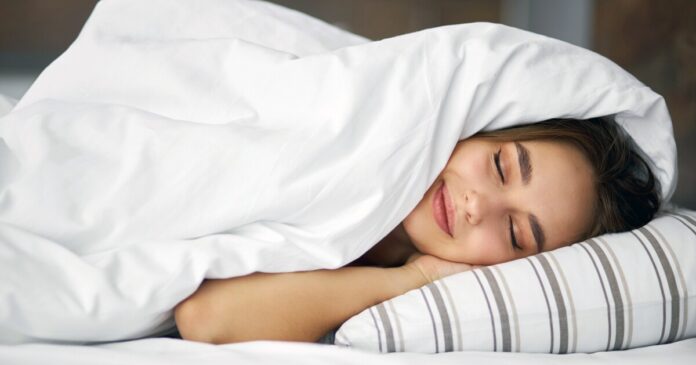You can forget the “no screens, no exercise, no snacks” bedtime rules that are designed to provide teens with good sleep. New research shows that almost all teens break them – and they still sleep just fine.
Sleep hygiene refers to a set of habits, behaviors and environmental factors that promote and maintain good sleep. For teens, the so-called “cardinal rules” of sleep hygiene are: no screens, physical activity, or food in the hour before bed.
A new study by New Zealand’s University of Otago explored whether older children and teens typically adhered to these pre-sleep recommendations and, if they did or not, how that affected their sleep time and quality.
“Sleep is incredibly important for teenagers to enable them to develop and function at their best, but so few studies have looked at pre-bed behavior and how it can impact rest using objective measures such as cameras,” said Chao Gu, the study’s lead author and a PhD candidate in the university’s Department of Medicine.
The reason behind these sleep “rules” is that screen use can disrupt melatonin and circadian rhythms, exercise may keep the body too alert, and eating – especially caffeine or sugary food – might interfere with sleep. Most of the evidence for these rules came from questionnaires and cross-sectional studies, which aren’t very reliable and can’t prove cause-and-effect. The present study set out to test whether harm was caused by those common pre-bed behaviors when measured with objective tools.
Eighty-three 11 to 15-year-old New Zealanders (37% Māori; 42% female) were studied over eight nights. They wore body cameras for four nights, and they were also monitored using stationary cameras in their bedrooms. Moderate-to-vigorous physical activity during the hour before bedtime and in-bed screen use was identified from camera footage. Wrist-worn accelerometers tracked sleep onset, duration, and quality over those eight nights. Food and drink consumed before bed were tracked using dietary recall. Using repeated-measures regression, the researchers compared each child’s own behavior on different nights to their own sleep outcomes.
They found that 99% of participants used screens before bed on most nights. The median screen time was around 32 minutes. Screen use had no significant effect on total sleep time or quality, but kids took about 23 minutes longer to fall asleep on screen-use nights. Only 22% of kids did moderate-to-vigorous exercise before bed, in rare, short bouts. On the nights they did exercise, kids got about 34 minutes more sleep, though this wasn’t tied to other sleep measures. Insofar as food and drink consumption was concerned, two-thirds (63%) ate (mostly snacks) before bed. No significant link was found between eating or drinking – including products containing caffeine, sugar, or fat – and any sleep outcomes.
“Not many teenagers followed current sleep guidelines, but those who did experienced little difference in their sleep,” Gu said. “It is very common for youth to use screens, quite common for them to have some food, but less common for them to be very physically active in the hour before bed.”
The study couldn’t establish cause-and-effect, only associations between these behaviors and sleep. Other limitations are that while the sample group was ethnically diverse, it was skewed toward socioeconomically advantaged families, and diet data was based on recall, not camera footage, making it less precise. Pre-bed exercise occurred rarely, so results should be interpreted cautiously.
Nonetheless, the findings suggest that the current sleep hygiene advice may be too strict. In practice, these behaviors had little measurable impact on how long or how well kids slept, except that screen use delayed falling asleep slightly. The guidelines might need revising, with a shift in focus away from strict prohibition toward balance and moderation.
More studies are needed. The researchers are currently undertaking a study of 10 to 15-year-olds, the results of which they hope will improve bedtime guidance for families.
The study was published in the journal Pediatrics Open Science.
Source: University of Otago


